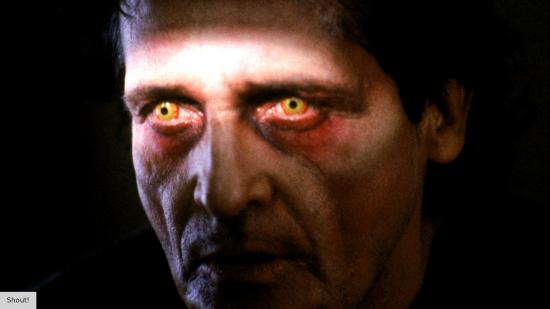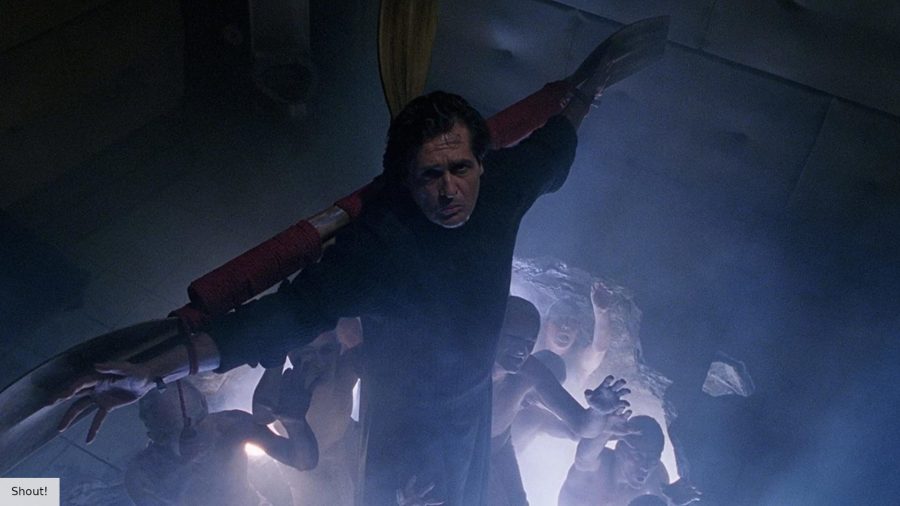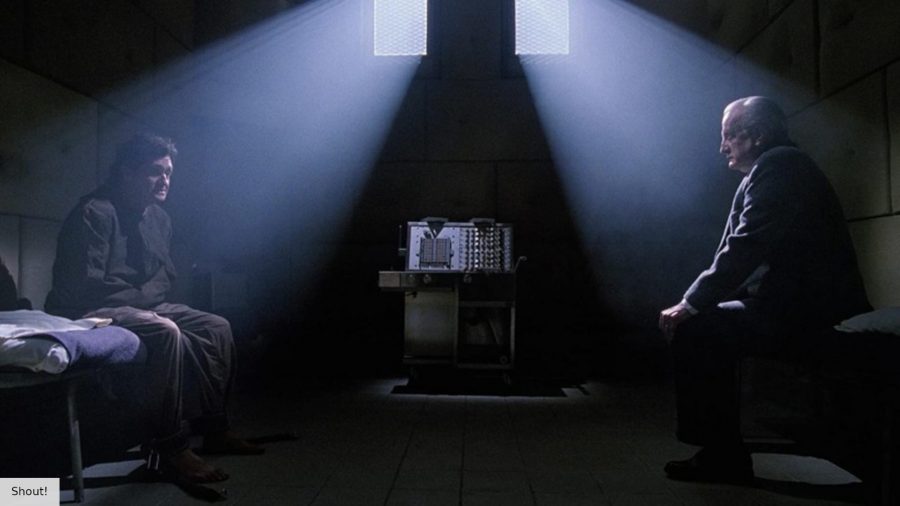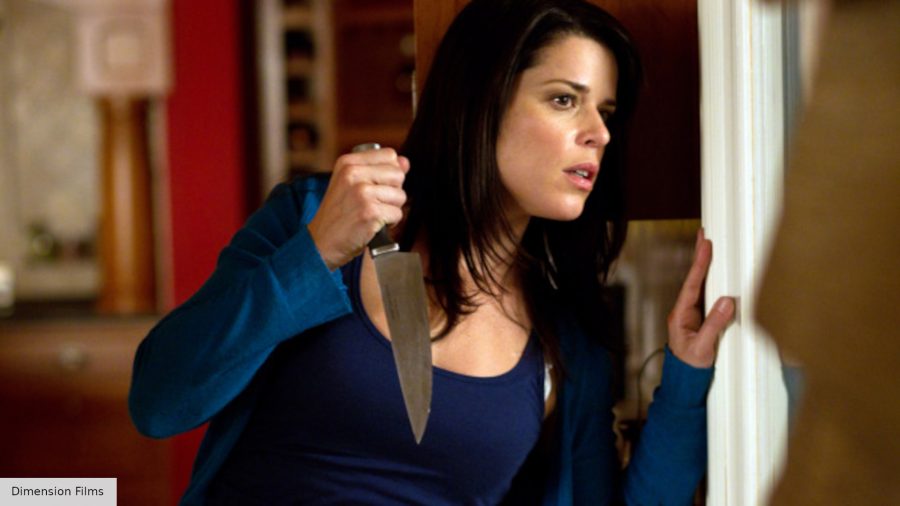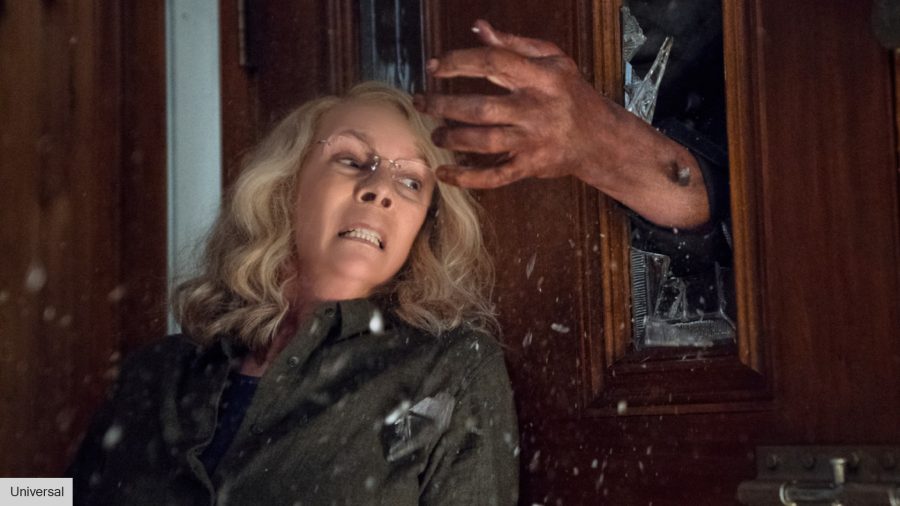The “requel” has become an increasing trend within horror movies. Part-reboot, part-sequel, the conceit is that the new installment picks up where one of the first movies left off, ignoring any intermittent franchising. Halloween did it in 2018, acting as a followup to Halloween 1978 but years later. Texas Chainsaw Massacre and The Exorcist are both set to receive similar, canon-shattering new beginnings in the near future.
Where continuity was loose, it’s now sacrosanct, and old characters and actors return to face their demons, literally and figuratively. In some cases, like Halloween, lead protagonist Laurie Strode (Jamie Lee Curtis) never really left, but now she’s an older woman, living in fear of what happened all those decades ago, and the story is how that trauma affects her.
Scream, where the heroes have grown and suffered in real-time sequel-to-sequel, seems to be the desired blueprint. Gone are disparate sequels, replaced by fresh starts with cohesive timelines going forward, all while still playing to nostalgia. Though commonplace now, these all owe a debt to The Exorcist 3, a requel truly ahead of its time.
Released in 1990, The Exorcist 3 was written and directed by William Peter Blatty as his last feature film. Blatty wrote the source novel and screenplay for 1973’s The Exorcist, but had no involvement in 1977’s The Exorcist 2: The Heretic, a disastrous sequel held as one of the worst movies ever made.
Through the late ’70s and early ’80s, Blatty developed a prospective third Exorcist film, a sequel to his original book, with William Friedkin, who directed the 1973 classic, back in the director’s chair. Unfortunately, it all fell through, and Blatty released it as a best-selling novel in 1983. The strong sales encouraged him to make it into a screenplay, and some years later, production companies expressed interest in funding an adaptation.
Bump in the night: The best ghost movies
Friedkin declined to participate at this point, citing creative differences, and John Carpenter was approached to direct but turned it down for similar reasons. So, for the second time after 1980’s The Ninth Configuration, Blatty became a director.
All this context helps to better understand The Exorcist 3 for the strange, alluring, meta-textual thriller movie it is. A decade-and-a-half after the events of the first film, Lieutenant William F Kinderman investigates a string of odd murders remarkably similar to a serial killer that had been given the death sentence some years prior.
The trail leads him to an amnesiac in a psychiatric ward: Father Damien Karras, who was thought dead at the end of The Exorcist. He reappeared sometime after the exorcism of Regan MacNeil, walking around aimlessly before being committed. Upon talking to Damien, William begins to suspect greater evil is at work.
Monstrous: The best monster movies
The Exorcist 3 is an unscrupulous movie, brimming with tension and dread. In the opening scene, Father Dyer visits the steps Damien died on, while William, at home, takes out a picture of he and Karras. Then we switch to night, and that haunting theme comes in as the camera sits at the bottom of those stairs. We move to a church, where a crucifixion of Jesus Christ starts to bleed. The doors burst open, and Christ’s sculpted face becomes wide-eyed. Even the son of God is shocked at what’s to come.
A young man is the first victim, in a murder where the fingerprints don’t match. Later, a nurse is killed near her desk on the night shift, and a doctor kills himself. Vicious deaths with no clear link. The nurse’s demise is famous for its suspense and fright – a long, static shot placed down the hallway of her station. She checks a room for strange noises, finds nothing. A security guard checks in then walks out, then suddenly, she’s followed by a phantom.
Blatty treats the camera like a benevolent spirit, one that can only show without interfering. We’re often removed from the evil, guarded even. In another scene, where William stands in a communal area of the psychiatric hospital, a demonic woman crawls on the roof. We watch from the adjoining office, through the glass door, then the camera brings us in closer, as if checking first that it was safe.
Classics only: The best movies of all time
Coming out of The Exorcist, Blatty creates an atmosphere of evil that just hangs in the air. This isn’t one little girl possessed, they’re all around now. William is followed at every turn. In another chilling moment, a statue is transformed to something resembling DC’s The Joker, a macabre defacement that seems to exist only to remind us this presence is lurking.

It all seems to emanate from Damien, locked up in his hospital room. When William talks to him, Damien appears to change faces to the Gemini Killer. The demon from The Exorcist, known as Pazuzu, is using Damien’s mind and body as a hub for the Gemini Killer’s spirit. At night, the Gemini Killer’s soul is placed in another patient’s body to commit heinous crimes, making the behaviour, and victims, near impossible to track.
In The Exorcist 3, Pazuzu is like Michael Myers in Halloween 2018, the sum of all William’s fears coming back to life. Scott’s William is more the hardened policeman than Jamie Lee Curtis’ Laurie Strode, but he’s no less fearful upon seeing his friend abused like this. Such weight is made all the heavier by the way the world is established: the town, these people, they’ve grown older, but not Pazuzu.
Less murder, more magic: The best fantasy movies
Blatty establishes that not only does evil not age, when you’ve seen it, been touched by it, it tends to linger long after the fact. He knows the scariest thing isn’t what’s new, it’s facing what we thought we’d already buried, but like a day hasn’t passed in the interim. It’s a paradigm Wes Craven employs in Scream 4. Ghostface, Scream’s recurring killer, is a moniker adopted by people in series protagonist Sidney Prescott’s orbit. For the fourth movie, her younger cousin Jill Roberts is the culprit. Envious of Sidney’s fame as the survivor of Woodsboro, Jill and her friend Charlie decide to kill her and frame her in order to become the local celebrity of choice.
Not only is Sidney reckoning with yet another incarnation of that ambivalent mask and jet-black shroud, she has to outmaneuver someone who’s younger, who reminds her of the formative years she didn’t get to have. William’s in the opposite direction: older people’s bodies stalk and prey on him, controlled by something for which time is nothing. In a later scene, an elderly woman is possessed and tries to kill William’s family at home. The attempt is unsuccessful, but for how long can William protect those he cares about? How long before he’s hospitalised because of his paranoia that the sick and frail are possessed and hunting him?
The Exorcist 3 explicitly uses the time between movies for its performances and plotting, Scott’s William isn’t easily shaken, affable and open-minded in the way a long-serving officer who witnessed a battle between the devil and man would be. But he’s tired, trudging on because it’s what he has to do.
Stream the screams: The best horror movies on Netflix
Coincidentally, Scream 4 has the same 15 year time gap, and Sidney Prescott wears her anxiety in the same way. She knows how to maintain a poker face for cameras, but she’s always weary of what haunts her. Laurie Strode tells a different story in David Gordon Green’s relaunch. Where once she was like Sidney, now she’s someone who’s had decades waiting for her demon to rise from the grave.
Michael Myers is an obsession that burns inside her, something that’s molded her behaviour towards everyone in her family. Not all of these manifestations were healthy, but she knew, one day, he’d come again. When William is forced to shoot Damien after another exorcism weakens Pazuzu, he doesn’t look surprised. Some part of him always suspected this could happen. Perhaps he’s relieved it was him, someone Damien loved, to lay him to rest.
The final shot shows Damien’s grave, dating his death in 1975, when The Exorcist took place. Blatty informally retired from filmmaking after The Exorcist 3, giving everyone in that story peace, including himself, now free of The Exorcist 2’s shadow on his work. Scream and Halloween are now on the same path towards closure.
Brains: The best zombie movies
Blumhouse is choosing to ignore The Exorcist 3 in upcoming sequels. Perhaps this, too, is what’s necessary. After all this time, maybe we need reminding that sometimes evil circumvents our best efforts, and another generation has to bear the cross of keeping it at bay.
